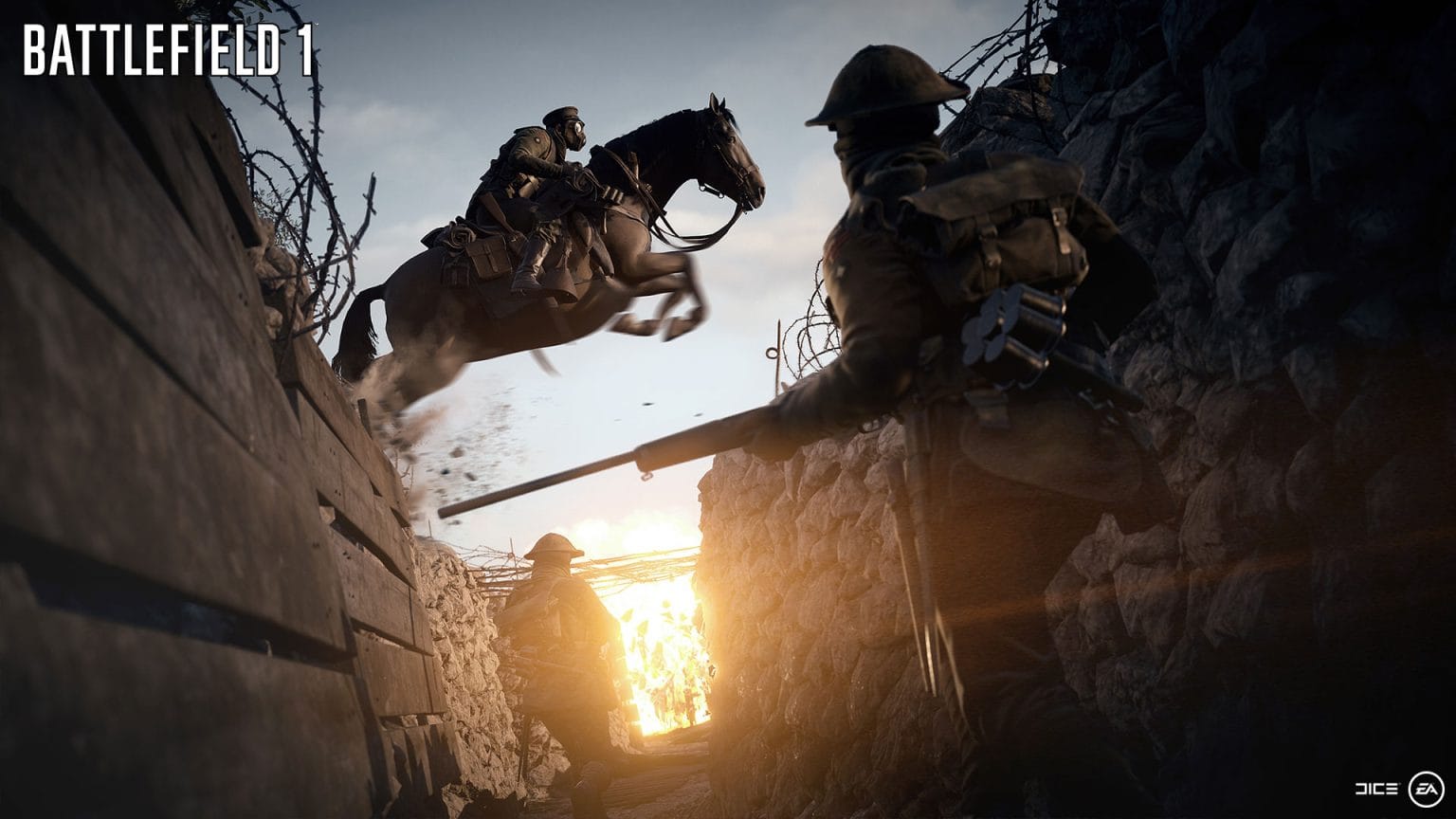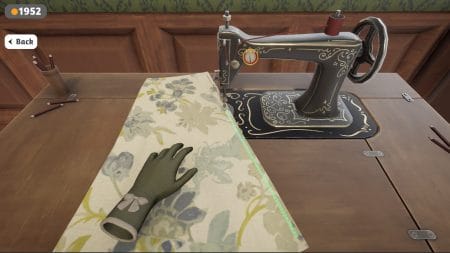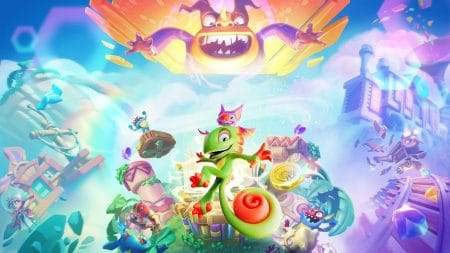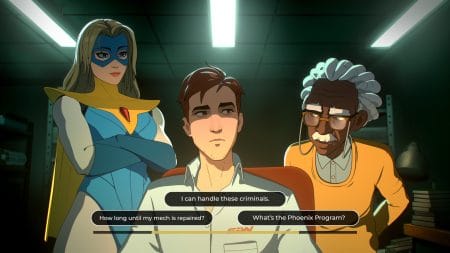Blood, Guts, and Tragedy in the War to End All Wars
When a player first steps into Battlefield 1’s no man’s land, they’re likely to face one of the most intense, chaotic, and anxiety-riddled online experiences of their lives. The carnage of the First World War churns the world around them into a pockmarked landscape filled to the brim with bodies and burning vehicles. Players fight ferociously to capture sectors of the map and gain an inch of an advantage against the other team, all while picking up dying comrades from the ground and resupplying the front lines with additional ammo. The experience is harrowing and labor intensive, requiring the player to constantly be on guard dodging tank shells and machine gun fire. While previous modern Battlefield conflicts have opted for modern day warfare, Battlefield 1 is DICE first foray into WW1’s trench warfare dynamic.
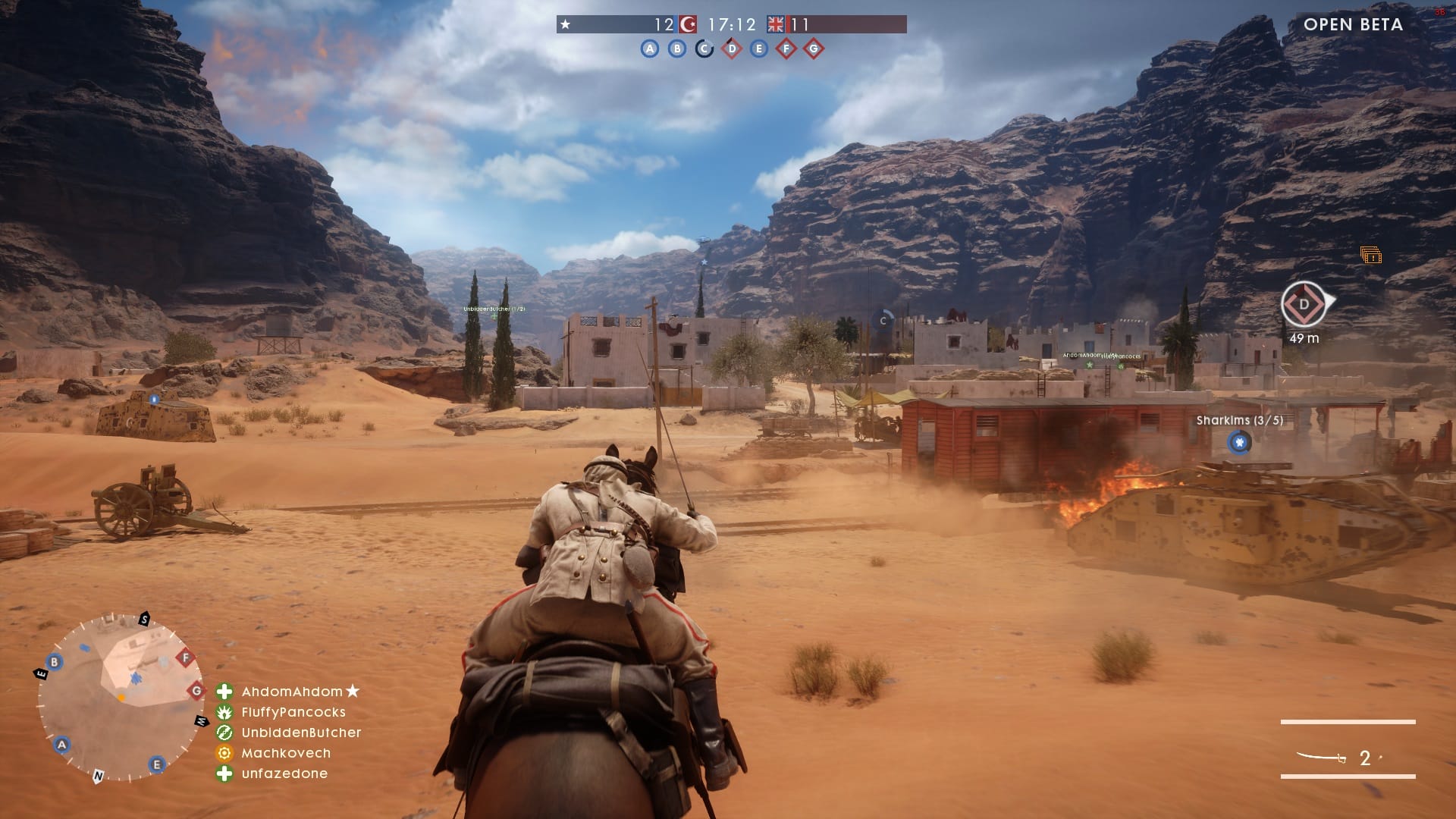
A little over a year ago, DICE’s Battlefield 1 was released to the public, bringing players back to an era often unexplored in gaming and mass media at large—World War 1. Society’s collective memory often washes over WW1 in favor of WW2’s easy-to-digest good vs. evil narrative. The Nazis were an appalling regime responsible for the genocidal slaughter of millions of Jews and countless others who were not “Aryan.” Where WW2’s atrocities are plain to see and easy to attribute its horrors to, WW1’s reality is politically messier. The war had no Nazis hellbent on conquering most of the known world and creating a reich of white supremacy. Instead, WW1 came from a complex tapestry of political alliances between empires bound for conflict. When Archduke Franz Ferdinand of Serbia was assassinated by Serbian rebel Gavrilo Princip, the world was thrown into one of the most bloody conflicts in human history.
The number of dead amounted to unforeseen levels in WW1. In the opening weeks of the war, hundreds of thousands were killed. These are baffling numbers compared to previous wars where it was rare for troop death counts to reach 30,000. Troops entered the war with thoughts of wars past: a high chance of survivability and an opportunity to go on an adventure. Instead what they found was nothing but death. No video game experience has tried to capture this complex experience in a forthright manner with respect to the disastrous conflict. When it first came to light that the Battlefield series would tackle the WW1 conflict, it was a unique and unusual event to focus on.
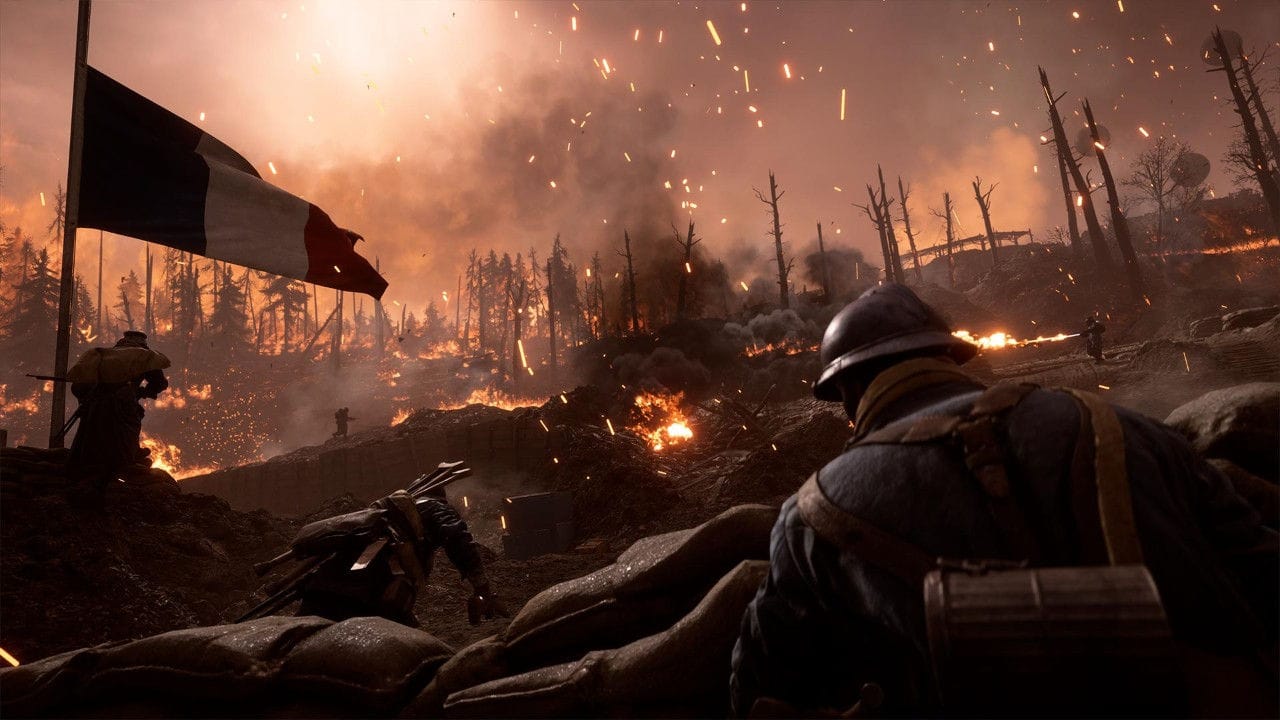
From a single-player perspective, what the public ended up receiving was mediocre at best. But the game’s failed campaign was luckily rectified by its far greater multiplayer counterpart. It is hard to believe that a multiplayer experience, without the hand guided narrative of the single-player campaign, could effectively capture WW1’s bleakness and chaos. But for a war that was so turbulent in reality, it makes more sense for the players, lightly guided by objectives, to drive the war experience themselves.
From the Chaos Comes Authenticity
The first time a player engages combat in Battlefield 1, they will likely die quickly in a hail of artillery and machine gun fire. The experience is confusing and jarring: chaos engulfs the player as tanks launch shells into trenches; the earth churns anew around the player as he or she desperately clambers for safety behind a rock or a foxhole, the latter of which is dug out by artillery fire and likely filled with your comrades’ bodies. The sheer magnitude of players’ ferocity with freewheeling machine gun fire and continuous artillery shelling over the course of an hour-long match plays to a tougher, meaner, and grittier experience than anything in the campaign.
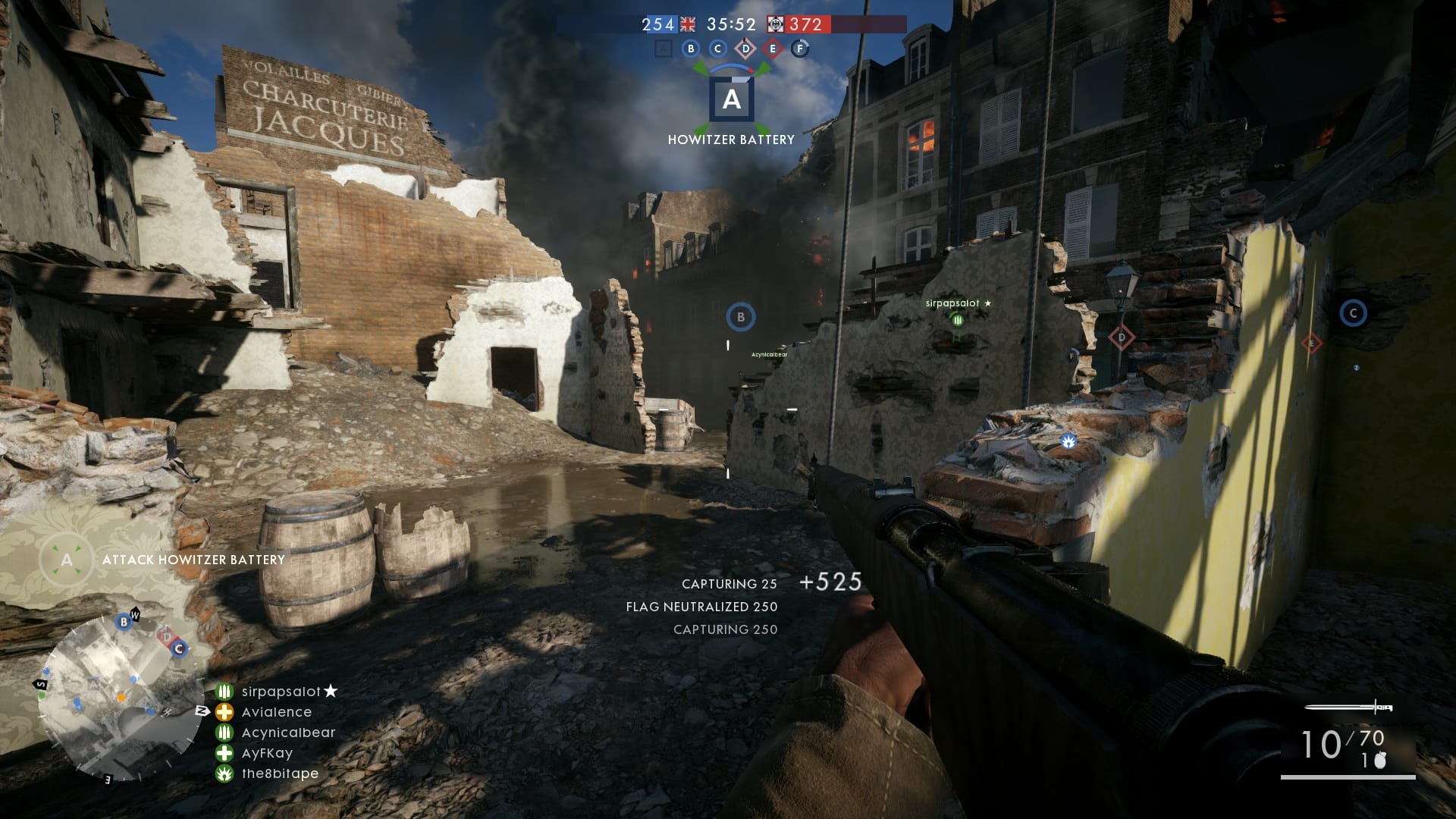
This begs an important question: could a user-generated experience in a game provide modern audiences an acuter collective memory to honor the coarse, cruel, bloodied, and mud-caked reality of WW1? In Battlefield 1’s multiplayer, a player, clutching his muddy rifle in hands, can taste a bit of the insanity for themselves. It may grant only a sliver of the war’s hellish world (and certainly, no one should get any closer to the experience than just a sliver), but it’s better than what most games have tried to accomplish when depicting war in competitive or single-player campaigns.
Certainly, obsession with maintaining kill death ratios, unlocking new weapons, and pursuing game objectives undermines the experience’s finer points. Lars Gustavsson, design director at DICE, stated that he wasn’t aiming to give a historical line-per-line but rather provide players with information on a war often overlooked in gaming. As video games have matured, developers have sought more serious subject matters to tackle. It was only a matter of time before game developers would decide to sink their teeth into a rich, political, and tragic experience such as WW1.
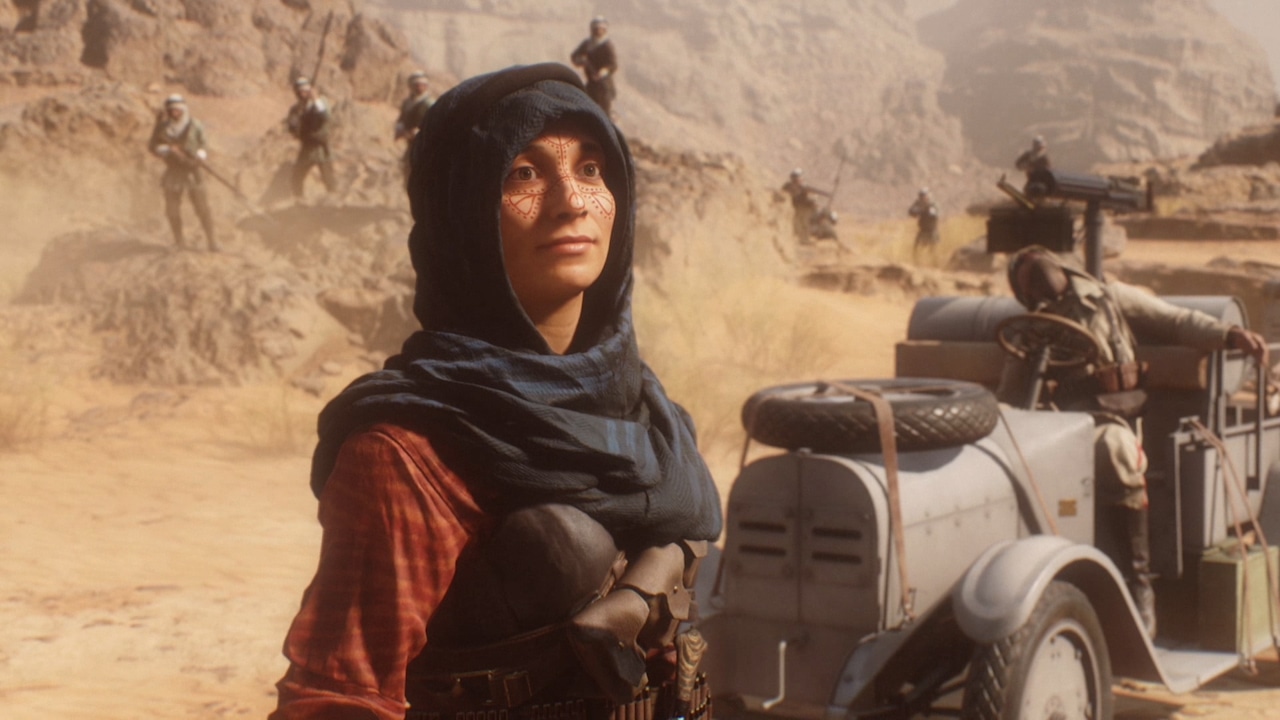
The Anonymity and Sacrifice of War
Battlefield 1‘s single player unfortunately falls for standard tropes often reflected in WW2 games. Since there is no clear good-guy-bad-guy dynamic in WW1, DICE opted to formulate their own protagonists and antagonists. In this case, the Allied Powers are playable during the campaign while the faceless enemies are the Central Powers: convenient stand-ins for what otherwise would have been Nazis. It’s a disservice to the actual men who fought in the conflict who were neither good nor evil.
Luckily, where the campaign fails the multiplayer succeeds since both sides receive honorable recognition for their courage and sacrifice in post-game exposition. After every match, a woman will provide a detailed explanation of the battle, its outcomes, the suffering the troops endured, and how important the conflict was in relation to the war as a whole. It doesn’t offer to empower the player or provide a face to any single troop because there are no heroes to be celebrated—rather only tragedy to mourn.
Strategic Allies… And Clever Foes
The Operation Mode for Battlefield 1‘s multiplayer is especially profound. It understands, with some accuracy, how defense and depth tactics worked in WW1. Players begin the match with equal opportunity to succeed, storming from trenches to overtake the enemy lines. If all positions are captured by the attacking forces then the defensive forces retreat to a new map where they resume their defense. The attacking forces only get three shots at winning the operation before their forces are too depleted to continue.
This is a highly intelligent game mode that draws from actual WW1 military tactics and limitations. The single-player experience partly fails because it aims to empower and support the player. The player’s allies don’t feel as capable as he or she does and thus it is left to the player to drive the story forward against an AI less capable than the player’s superior intelligence. But having 64 human minds on a field, participating on maps designed after real WW1 battles and using trench warfare tactics, resonates well.
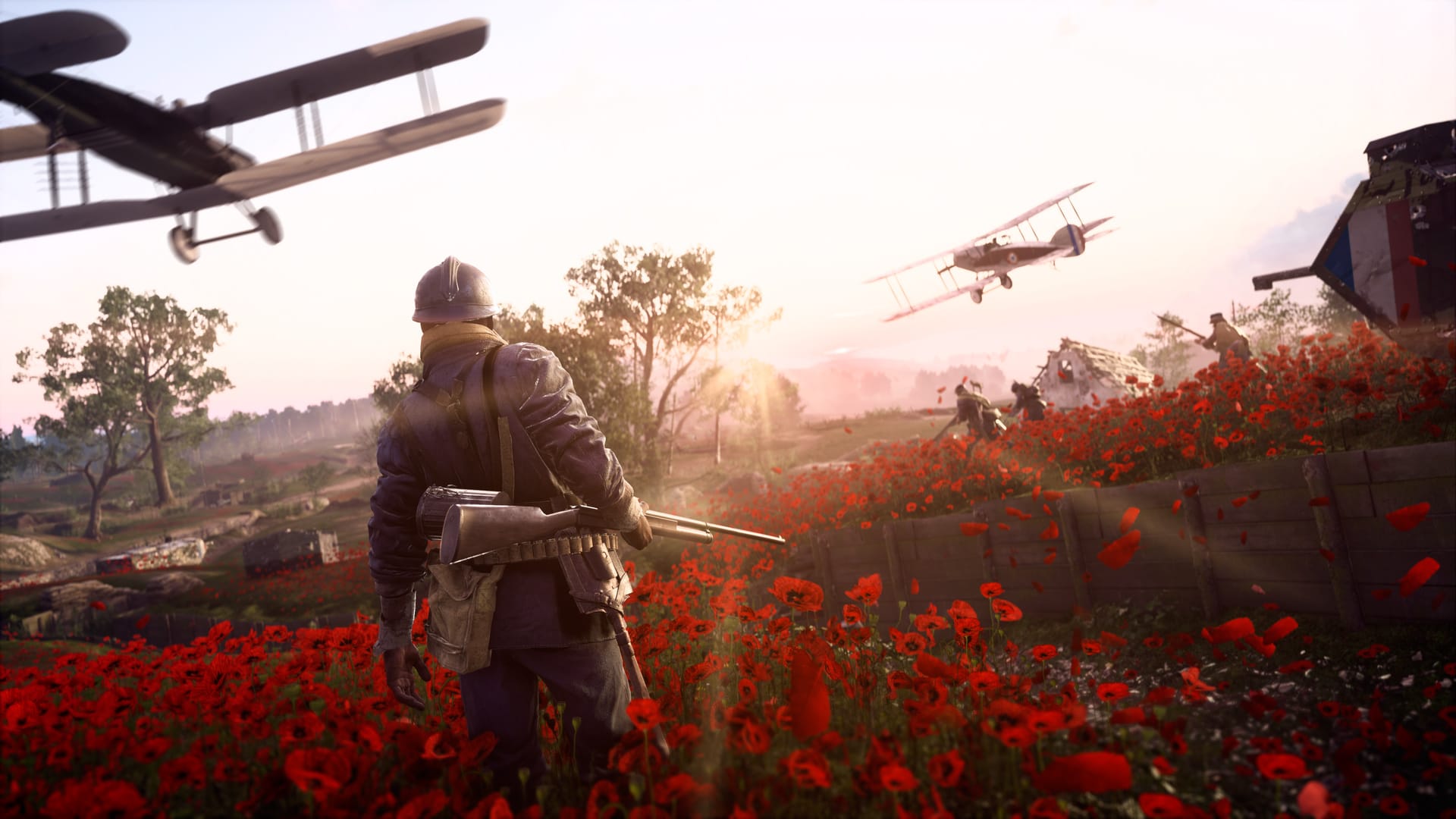
A War Unlike Any Other
Battlefield 1 is far from perfect. It failed on many fronts with its single-player campaign by not including playable Central Powers or Russia, both of which are central to understanding the conflict. But the multiplayer experience brings us a raw, profound experience. Granted, the repeated play will dull the initial impact it provides but one could refer to a series of no hud immersion videos online to see for themselves just how discerning the experience can still be. Many mediums have provided their own sentiment to the war and thus keeping the collective memory alive of one of the world’s most tragic wars. Video games provide us with a unique ability to experience this conflict.
Hopefully, Battlefield 1 will spur more interest in this often overlooked conflict in the world of interactive media. The historical remembrance of wars past, unfortunately, fades from human memory with each passing year. Our future generations often forget the world-changing events of years past that molded the world of today and tomorrow. With more youth engaging in video games now than ever before, it is an important medium for creators to take hold of and utilize for historical remembrance.
World War 1 was a horrendous tragedy, and it provides ethical lessons to generations today. Other conflicts of historical significance could similarly use an inclusion in video gaming, spurring interest and creating fresh memories of our ancestors’ suffering due to humanity’s ignorance and mistakes. Utilizing user-generated experiences can give a plain perspective to war without the hand-guided manipulation of linear storytelling that can often miss the mark on the historical narrative. In WW1 there are no good guys—only the forlorn, sacrificed, dismembered, and the dead. Battlefield 1’s multiplayer is a welcome inclusion in the collective memory.
Shane Bond has been an avid gamer for 24 years. He first found his love for gaming watching his dad play Super Mario Bros. on the original Nintendo when he was five. His first console given to him was a Sega Genesis when he turned seven and played an inordinate amount of hours on Sonic II. Since then Shane has played or owned nearly every console since, including some PC gaming. Shane graduated from California State University of East Bay in 2012 with a degree in journalism and wrote for various publications afterwards as a city government reporter. Outside of writing and video games, Shane has been training in Brazilian Jiu Jitsu for four years. Shane also watches more anime than he should.


